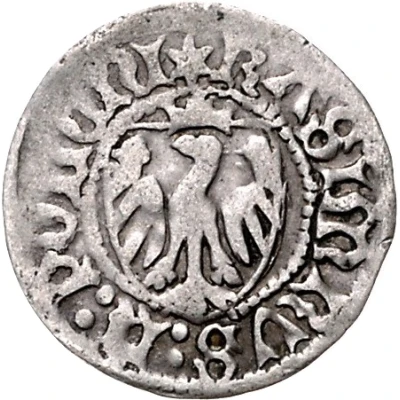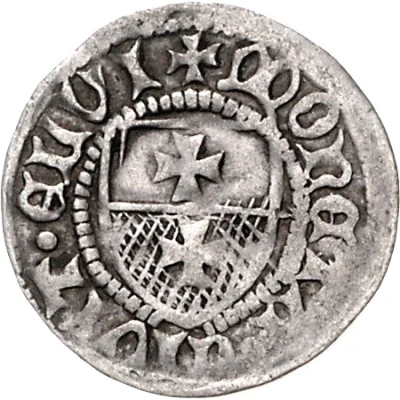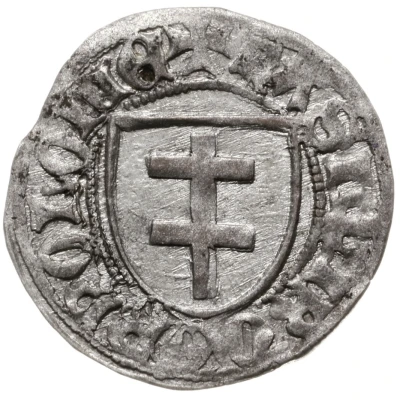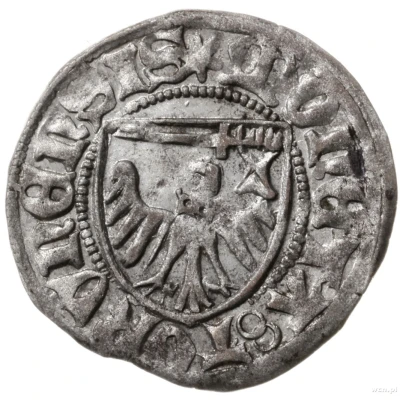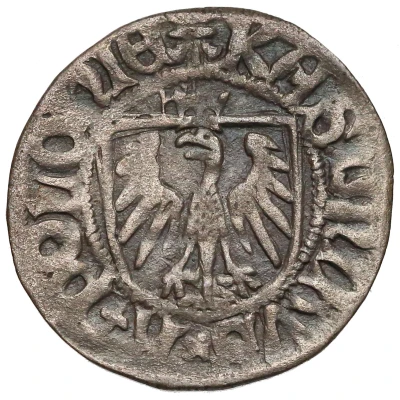
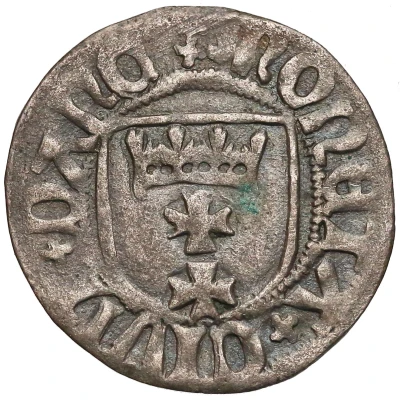

Szeląg gdański - Casimir IV Jagiellon Gdańsk ND
| Silver | 1.43 g | 20 mm |
| Issuer | Kingdom of Poland |
|---|---|
| King | Casimir IV Jagiellon (Kazimierz IV Jagiellończyk) (1446-1492) |
| Type | Standard circulation coin |
| Years | 1446-1492 |
| Value | 1 Shilling (12) |
| Currency | Grosz / Groschen (1306-1528) |
| Composition | Silver |
| Weight | 1.43 g |
| Diameter | 20 mm |
| Shape | Round (irregular) |
| Technique | Hammered |
| Demonetized | Yes |
| Updated | 2024-10-07 |
| Numista | N#250618 |
|---|---|
| Rarity index | 87% |
Reverse
Emblem of Gdańsk in a shield, lettering around it.
Script: Latin (uncial)
Lettering: MONETAxCIVIxDANC
Lettering (regular font): MONETAXCIVIXDANC
Unabridged legend: Moneta Civitatis Danczik
Translation: Coin, City of Danzig.
Comment
Note: There are a lot of different types of this coin, about 50 of them are known. The main difference between them is the lettering, e.g. REX○P instead of REX○POLONIE. The other difference is the symbol placed above the shield and the emblem. The one pictured at the top has a double cross and a lily, but other types might have a circle or a ring. There are also two quite rare types. One of the rarest is when the eagle isn't in a shield. It's estimated that about 3 of them survived until the present day. The second type is when the eagle is in a shield, but doesn't have a crown. This one is pictured in the second photo below.
Pictures: © GNDM
Kopicki 7249
Pictures: © WCN
Interesting fact
One interesting fact about the Szeląg gdański - Casimir IV Jagiellon (Gdańsk) ND (1446-1492) coin is that it was used as a form of currency during a time of great economic growth and cultural development in the Kingdom of Poland. The coin was minted during the reign of Casimir IV Jagiellon, who was known for his efforts to strengthen the Polish economy and promote trade. The coin's silver content and intricate design made it a valuable and highly sought-after form of currency, both within Poland and beyond its borders.
